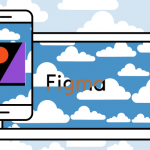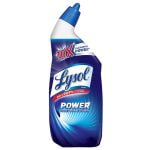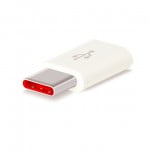
Industrial grade 3D printing has been around for more than 30 years, but recent technological developments now let anyone buy a small 3D printer that essentially turns your desk or workbench into a factory. The latest 3D printers from Robo, the C2 and R2, have advanced the accessibility of the technology with a redesigned aesthetic, while at the same time providing the connectivity of smart devices and printing technology with more features.
The new Robo C2 and R2 printers are currently in a Kickstarter campaign, having raised $287,099, well over the $100,000 goal, with 10 days to go. This is the second campaign for Robo, with the first one launching the company in 2013 and raising a total of $649,000 in 40 days.
After three years, the company has introduced its latest innovation in 3D printing, and the C2 and R2 are being presented as the next step in the technology’s evolution. The first thing you notice about these printers is that they are aesthetically pleasing. They resemble high end consumer electronics or expensive laboratory equipment. However, the beauty seems more than skin deep, because the company has added some features that it says are essential in today’s connected world.
A Look At the New Robo 3D Printer Line
The R2
The R2 is the high-end and larger version, with a print size of 8″ x 8″ x 10″ and a 5″ built-in color touch screen so you can control and manage your printers. This control also extends to your mobile device with the Robo app. According to the company, it has a class leading print speed of up to 16 mm 3/s, layer resolution of 20 to 300 microns, and travel speed of 250 mm/s on an auto-leveling, heated and removable platform.

The print head is a quick change nozzle that is expandable to two nozzles so you can print with two different materials. And when you are ready to print, you have more than 30 materials to choose from, with an open source materials compatibility feature that will allow you to use new filaments in the future.
The unit has a camera, which you can use to view the progress of your project on you Mac, Windows and iOS devices (Android coming soon). The connectivity option includes WiFi, and if there is no WiFi available, you can turn on hotspot mode and the printers will emit their own WiFi hotspot.
Both printers come with a free iOS Robo app, Robo slicing software, a free one year subscription to Autodesk Fusion 360, and they allow you to use any third party slicing software that outputs into gcode, including Mattercontrol, Simplify3D, Cura, Slic3r and others.

The C2
The C2 is equally equipped in most of the specs, but the size is smaller. The printer has a 5″ x 5″ x 6″ print size and a 3.5″ color touch screen, but it has the same layer resolution, print and travel speed as the R2. When it comes to the quick change nozzle, you only get one on the C2, which means you can print only one of the 20 plus materials that are compatible with the material at a time.

Comparison
Design wise the Robo printers look better, but not by much because most of the top tier 3D printer manufacturers are in the second or third generation of their devices, which have improved greatly from their initial models. When it comes to price, the Robo printers have a clear advantage over the Ultimmaker 2+ ($2,499) and Replicator+ ($1,999), coming in at only $1,099.
The C2 is also cheaper at $599, compared to the low end model of the other manufacturers, with the Ultimmaker 2 Go and Makerbot Mini+ coming in at $1,199 and $999 respectively.
When it comes to features, the R2 has better layer resolution than the Replicator +, better travel speeds than both its competitors and an extra print head. The C2 also does better, with better layer resolution and travel speed than the other two. The removable and auto-leveling platform is also an added feature compeetitors don’t have, as is the 20 + materials compatibility.
Business Use
The one thing 3D printing has done better than anything else is dramatically lower the cost of prototyping. This was a process that involved a lot of time and money, leaving small business owners financially strapped or just totally out of the market. With today’s 3D printing technology, a small business owner can invest around $1,000 or less and have a quality printer that will allow small architectural, design, engineering and creative firms to thrive.
Pricing and Availability
Robo announced it is in full-scale production and both printers will be available in the next four months, with the C2 slated for general market release in November of 2016, and the R2 in January 2017.
Images: Robo
[“source-smallbiztrends”]











